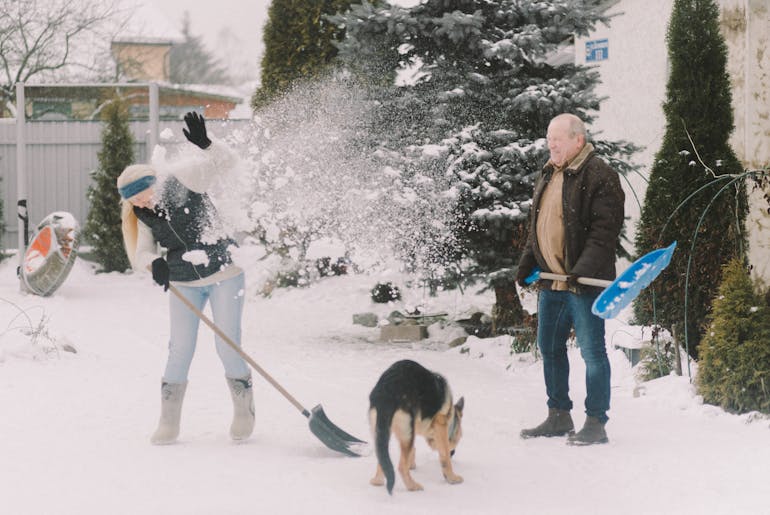Winter relocations present icy roads, low temperatures, and sudden storms. These factors create extra safety concerns. Handling heavy items during a winter relocation requires careful planning. Slippery walkways increase injury risk, especially with bulky objects. Protective gear, sturdy packaging, and mindful scheduling all play big roles. Pay attention to forecasts. Keep paths clear of snow and ice. Prepare your body with short stretches before lifting. Even a small misstep can cause damage. Some people look to movers DC area for added support. They bring tools for large loads. Careful preparation helps you handle cold-weather moves.
Preparing for winter weather
Check local forecasts often. Temperatures drop without warning. Snow and ice form quickly. Shovel and salt walkways one day before you move. Keep an eye out for black ice near steps. Wear shoes with strong traction. Avoid footwear with worn soles. Dress in layers for warmth and flexibility.

Clearing driveways takes time. Start early to reduce stress. Inspect your vehicle’s tires for safe tread depth. Watch for hidden hazards under fresh snow. Use caution when carrying loads on uneven surfaces. Keep extra winter supplies on hand. Some people rely on piano movers Northern Virginia for special pieces. They handle harsh conditions with skill.
Safe packing and moving techniques
Handling heavy items during a winter relocation calls for sturdy packing. Use thick boxes that resist dampness. Reinforce corners with extra tape. Separate heavier objects into smaller containers. That method makes lifting simpler. Label each box on multiple sides. Clear wording reduces the guesswork. Lift with your legs, not your back.
Avoid awkward twisting. Pivot feet instead. Steady motions prevent muscle strains. Tools like dollies and straps ease the burden. Never attempt to drag bulky furniture alone. Get help or consider movers Stafford County for bigger loads. They distribute weight well and reduce physical stress. Take breaks to rehydrate. Cold can still drain your energy.
Shielding fragile belongings from winter hazards
Snow and ice damage delicate items. Moisture seeps into cardboard, weakening boxes. Wrap breakables with plastic or bubble wrap first. Then place them in sturdy containers. Seal each box to keep out water. Avoid setting fragile things on wet surfaces. Even small amounts of melting snow can freeze fast.
Wooden furniture risks cracks when temperatures swing abruptly. Let it warm gradually after unloading. Electronics also hate quick temperature changes. Bundle them in blankets or towels. If you need extra care, consult residential movers Washington DC. They bring protective materials and proven methods. Keep valuables off the icy ground to avoid moisture damage.
Extra care for electronics and breakables
Electronics fail in extreme cold. Internal parts freeze or form condensation. That moisture may short-circuit devices. Please place them in cushioned boxes with sealed plastic covers. Then add extra padding around them. Let them reach room temperature before turning them on. Rapid power-ups sometimes cause permanent harm.

Glassware and fine china need special care too. Wrap each piece separately. Use bubble wrap or soft cloth between layers. Never stack plates flat if you can stand them upright. That reduces stress on surfaces. Label these boxes clearly. Everyone helping you should know to keep them safe and upright.
Advantages of hiring professionals
Handling heavy items during a winter relocation can overwhelm you. Snowy paths and slippery steps raise injury risk. Professionals show up with teams trained to manage big loads in rough conditions. They coordinate each stage, including clearing walkways and balancing weight. Their experience saves effort.
They also bring specialized tools. Ramps, dollies, and lifting straps protect movers and belongings. Insurance coverage may reduce worries. If something breaks, you can file a claim. Experts often know winter routes well. They plan around storms and icy roads. That preparation avoids last-minute chaos and damage.
How experts manage heavy loads
Professionals begin by examining entryways and walkways. They look for slick spots or narrow corridors. Then they place protective mats for traction. They also set ramps to bridge door thresholds. That step prevents furniture from banging edges. Communication is key. One person leads, and others follow.
Teams use signals to lift together. They keep loads balanced. Crew members rotate tasks to avoid fatigue. Specialized gear like motorized stair climbers reduce strain. Heavy furniture rides on dollies, and then gets fastened with straps. Regular checks catch loose parts or icy surfaces. This approach prevents accidents and delays.
Emergency preparations for winter moves
Sudden storms or plummeting temperatures can ruin any plan. Keep a shovel, salt, and sand ready. Clear snow from entry points as you go. Recheck forecasts on a moving day. If conditions worsen, pause until safe. Wear layers for temperature shifts. Also, stay hydrated. Visit Ready.gov’s official website for additional information.

Build an emergency kit for your car. Include blankets, flashlights, and a charged phone. Pack snacks and water in case you get stuck. If your home loses power, keep a small generator handy. Communicate with helpers. Let them know if you must reschedule. Safety comes first in winter weather.
Staying flexible with your schedule
Winter weather changes fast. A clear morning might turn stormy by midday. Watch for alerts and road closures. If heavy snow arrives, delay your move. Share backup dates with helpers. Everyone needs updates if you shift times. That way nobody gets stranded or rushed.
Leave wiggle room in your travel plans. Avoid booking tight connections. Allow extra time between loading and arrival. Slow driving on icy roads takes longer. Prepare for sudden detours. Keep warm clothes on hand if you must stop. Patience helps you make careful choices when conditions worsen.
Safely wrapping up
Handling heavy items during a winter relocation demands foresight. Icy walkways and cold air add stress. Plan carefully, dress warmly, and use sturdy gear. Keep electronics insulated. Take breaks when tired. Stay flexible with your timetable. A successful move means safe lifting and fewer mishaps. Winter conditions call for patience and thorough preparation.


